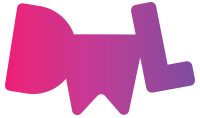What does it take to be a graphic designer? It’s a mix of creativity, technical know-how, and the ability to communicate visually. Fear not, though! We’re here to help you navigate the journey, from learning software to building a stunning portfolio.
Let’s embark on this creative adventure together and unlock the secrets of becoming a phenomenal graphic designer!
Figure Out Your Passion
Before we dive into the nitty-gritty of how to become a graphic designer, let’s talk about something that’s just as important: figuring out your passion.
There Are Many Kinds of Graphic Design
First things first, there are many different kinds of graphic design out there. You might be interested in creating logos, designing websites, making illustrations, or even creating animations. The possibilities are endless!
It’s essential to determine which area of graphic design you’re most passionate about. Think about what you enjoy doing, what you’re good at, and what type of work inspires you. If you’re not sure yet, try out different areas of graphic design to see which one feels right for you.
Once you’ve identified your passion, you’ll be able to focus on developing the skills you need to succeed in that area. Whether you’re a beginner or an experienced designer, it’s never too late to start honing your craft.
Remember, graphic design is a constantly evolving industry, and there’s always something new to learn. So, don’t be afraid to experiment and try new things.
Now that you’ve figured out your passion let’s move on to the next step in becoming a graphic designer.
Get the Right Education & Training
As a graphic designer, obtaining the right education and training is essential to acquire the knowledge and skills necessary to build a successful career. In this article, we will delve into the various options and routes that you can take to get the right education and training to become a graphic designer.
1. Pursue a Degree in Graphic Design
A degree in graphic design is a great option if you are looking for an in-depth education in the field. A Bachelor’s degree in Graphic Design typically takes four years and covers various aspects of graphic design, such as typography, branding, layout design, and more. Pursuing a degree in graphic design gives you a strong foundation in the field and prepares you for a successful career as a graphic designer.
2. Attend a Graphic Design Bootcamp
Graphic design bootcamps are intensive training programs that aim to teach you the necessary skills to become a graphic designer in a short amount of time. Bootcamps typically last for a few weeks to a few months and cover topics such as design software, typography, and layout design. Bootcamps are a great option for those who want to fast-track their education and get hands-on experience in the field.
3. Take Online Courses and Tutorials
If you prefer a more flexible and self-paced approach to learning, taking online courses and tutorials is an excellent option. There are numerous online courses and tutorials available that cover various topics related to graphic design. Some of these courses are free, while others require a fee. By taking online courses and tutorials, you can learn at your own pace and gain valuable skills that you can apply in your career as a graphic designer.
4. Attend Workshops and Conferences
Attending workshops and conferences is an excellent way to network and learn from other professionals in the field. Workshops and conferences cover various topics related to graphic design and provide you with the opportunity to learn new skills and techniques. Attending workshops and conferences also allows you to connect with other graphic designers and build relationships that can help you in your career.
In conclusion, there are various options available for obtaining the right education and training to become a graphic designer. Whether you pursue a degree, attend a bootcamp, take online courses, or attend workshops and conferences, it’s important to choose a path that aligns with your goals and learning style. By acquiring the necessary knowledge and skills, you can build a successful career as a graphic designer.
Build Your Skills
Becoming a graphic designer requires a set of skills that can be learned through practice and effort. Here are some tips to help you build your skills and become a successful graphic designer.
Practice Design Fundamentals
The first step in building your skills is to practice the fundamentals of design. This includes understanding color theory, typography, composition, and layout. By mastering these skills, you will be able to create visually appealing designs that communicate your message effectively.
Explore Different Design Tools
Graphic design requires the use of various tools such as Adobe Photoshop, Illustrator, and InDesign. It is important to explore and become familiar with these tools as they will be essential in your design work. Take online courses, read tutorials, and practice using these tools to become proficient in them.
Stay Up-to-Date with Latest Design Trends
Design trends are constantly evolving and it is important to stay up-to-date with the latest trends to keep your work fresh and relevant. Follow design blogs, social media accounts, and attend design conferences to stay up-to-date with the latest trends and techniques.
Get Feedback and Criticism
Getting feedback and criticism on your work is crucial in improving your skills. Seek out feedback from other designers, friends, and family to get a different perspective on your work. Take criticism constructively and use it to improve your work.
Build Your Portfolio
Your portfolio is your showcase to potential clients and employers. Build a strong portfolio that showcases your skills and your unique style. Include a variety of projects that demonstrate your versatility as a designer.
Find a Mentor
Finding a mentor can be a valuable resource in building your skills as a graphic designer. Look for a mentor who has experience in the field and is willing to guide you in your journey. You can find mentors through networking or online communities.
Practice, Practice, Practice
Lastly, practice is key in building your skills as a graphic designer. Set aside time each day to practice and experiment with different design techniques. The more you practice, the better you will become.
Remember, becoming a graphic designer takes time and effort. By following these tips and putting in the work, you can build your skills and become a successful graphic designer.
Create a Portfolio
As a graphic designer, having a portfolio is crucial to showcase your skills and abilities to potential clients or employers. A portfolio is an opportunity to display your best work and demonstrate your design skills.
Choose the Right Platform
There are many online platforms to choose from when creating your portfolio. Some popular options include Behance, Dribbble, and Squarespace. Consider the features and pricing of each platform to determine which one is the best fit for you.
Showcase Your Best Work
When selecting which pieces to include in your portfolio, choose your best work that demonstrates a range of your skills. Consider including a variety of projects such as branding, print design, and web design to showcase your versatility.
Provide Context
When presenting your work, provide context for each project. Explain the client’s goals and any challenges you faced during the design process. This will give potential clients or employers a better understanding of your design process and problem-solving skills.
Update Regularly
Keep your portfolio up-to-date with your latest projects. This shows that you are active in the industry and constantly improving your skills. Additionally, regularly updating your portfolio can improve your search engine optimization (SEO), making it easier for clients or employers to find you.
Include Contact Information
Make sure to include your contact information on your portfolio so potential clients or employers can easily reach out to you. Consider including your email address, phone number, and links to your social media profiles.
Creating a portfolio may seem daunting, but it is an essential part of becoming a successful graphic designer. By choosing the right platform, showcasing your best work, providing context, updating regularly, and including contact information, you can create a portfolio that demonstrates your design skills and attracts potential clients or employers.
Networking and Job Search
As a graphic designer, it’s important to have a strong network of professionals who can help you find new job opportunities. Here are some tips for networking and job searching:
1. Attend Industry Events
Attending industry events is a great way to meet other designers and potential employers. Look for local meetups, conferences, and workshops where you can connect with other professionals in your field. Don’t forget to bring your business cards!
2. Use Social Media
Social media is another powerful tool for networking and job searching. Be sure to have a professional-looking profile on platforms like LinkedIn, Behance or Dribble, and Instagram. Follow other designers and engage with their work by leaving comments and sharing their posts. You never know who might see your work and offer you a job!
3. Join Professional Organizations
Joining a professional organization related to graphic design is an excellent way to meet other designers and gain valuable industry insights. Some options include the American Institute of Graphic Arts (AIGA) and Graphic Artists Guild.
4. Create a Strong Portfolio
Your portfolio is your most important marketing tool as a graphic designer. Make sure it showcases your best work and accurately reflects your skills and style. Consider creating both a digital and print portfolio to show off your work in different formats.
5. Check Job Boards Regularly
Keep an eye on job boards like Indeed, Glassdoor, and LinkedIn for new job postings in your field. Set up job alerts so that you’re notified when new opportunities become available.
Remember, networking and job searching is an ongoing process. Keep building relationships and working on your portfolio even if you’re currently employed. You never know when a new opportunity might come your way!
Conclusion
Becoming a graphic designer is an exciting journey filled with creativity, challenges, and opportunities. By following these steps, you’ll be well on your way to turning your artistic talents into a rewarding career. Remember to focus on developing your skillset through education, practice, and networking. Don’t forget to build a stunning portfolio to showcase your unique style and abilities. Stay up-to-date with industry trends, and always be willing to learn and grow.
In the world of graphic design, there’s no room for dull moments. So, embrace your inner artist, and let your imagination run wild! With determination and passion, you’ll soon find yourself creating awe-inspiring designs and living the dream as a successful graphic designer. The sky’s the limit!




